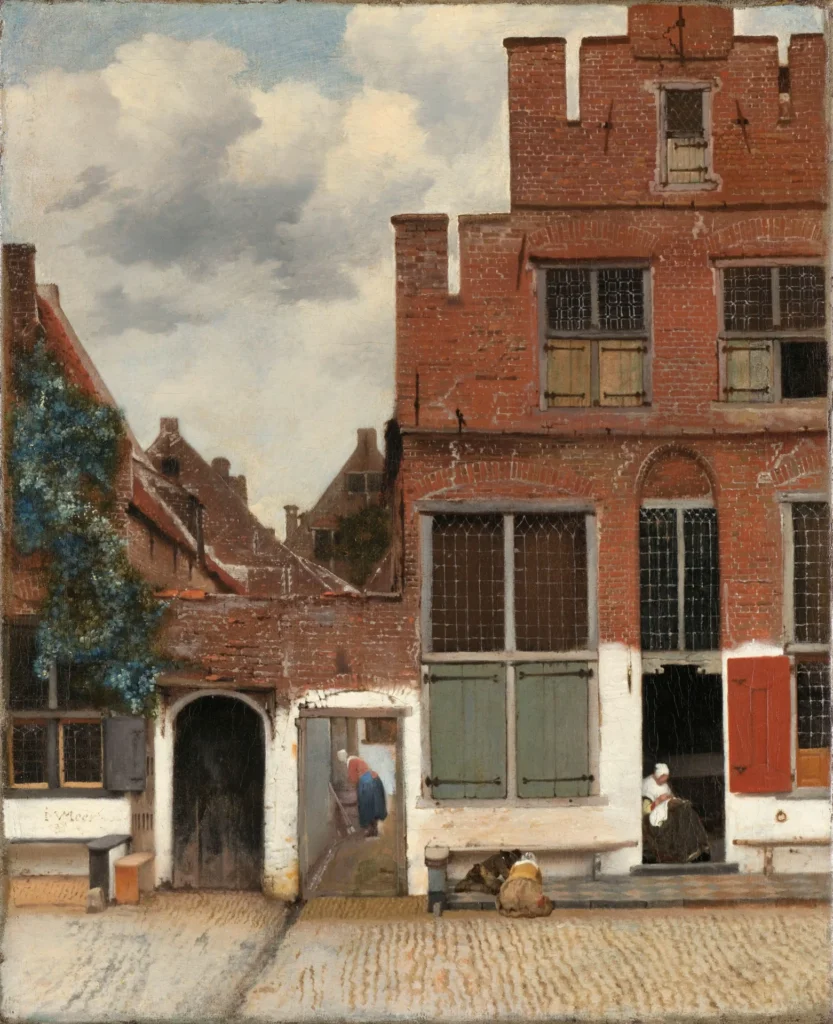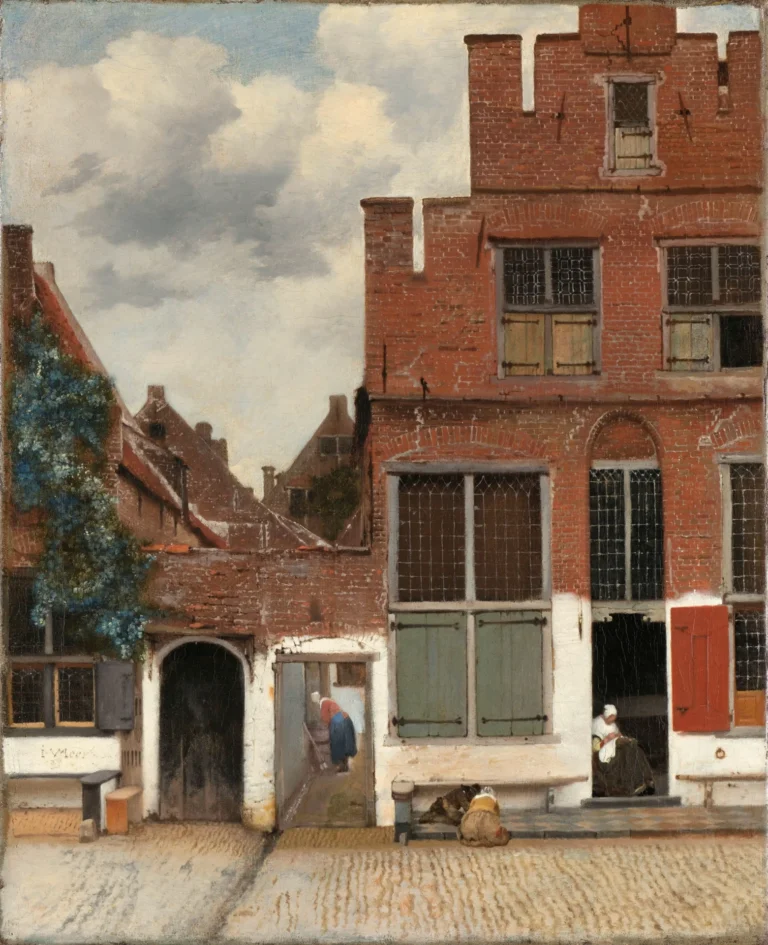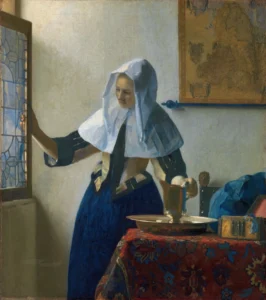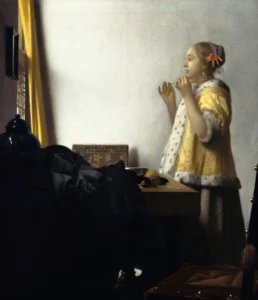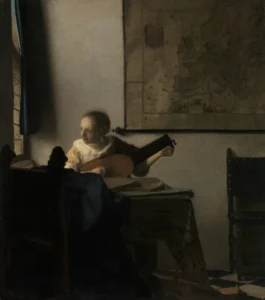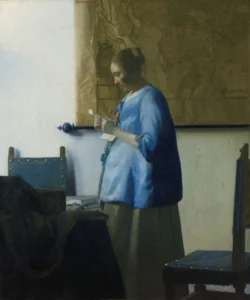View of Houses in Delft, Known as ‘The Little Street’ (1658)
'The Little Street' offers a compelling portrayal of 17th-century Dutch life, capturing the essence of Delft with its orderly, vibrant street scene. Vermeer’s limited yet skilled palette brings depth to the walls and figures, including children at play and a maid engaged in needlepoint. This artwork stands out as an unusual outdoor setting amidst Vermeer’s predominantly indoor compositions, providing a rare glimpse into the artist's own environment.
Year 1657-1658
About the Artwork
This piece holds a special place in art history as one of the few outdoor scenes painted by Vermeer during a time when artists predominantly focused on interior spaces. The location depicted is steeped in personal connection, as Vermeer’s family lived nearby and the house featured belonged to his aunt. Through meticulous archival research, the exact street and houses were identified, enhancing the significance of the work as a historical document that illustrates everyday life in 17th-century Delft.
Did You Know
Liked what you see? Add it to your collection.
Enjoyed reading? Share it.
... continued
Artist and Period
The painting is the work of Johannes Vermeer, a prominent artist of the Dutch Golden Age. It is one of his few works that depict outdoor scenes, contrasting with his more common interior settings.
Location and Setting
The painting is set in Delft, Netherlands, Vermeer’s hometown. After extensive research, it has been determined that the scene depicts a street on the Vlamingstraat, specifically at present-day numbers 40 and 42. This conclusion was reached through archival research, including a historical document from 1667 that detailed the measurements of houses and passageways along Delft’s canals.
Composition and Details
The painting shows a quiet street scene with ordinary houses, which was unusual for Vermeer’s work and the period. It features a balanced composition with straight angles and triangular elements, creating a sense of vitality. The walls, stones, and brickwork are painted in thick layers, making them almost palpable. The scene includes a few figures, such as children playing and a maid working on needlepoint, adding to the domestic and everyday atmosphere.
Pigments and Technique
Vermeer used a limited but effective palette to achieve the realistic depiction of surfaces. The pigments included red ochre, madder lake, lead white, natural ultramarine, azurite, and lead-tin-yellow. For example, the reddish-brown brick wall was painted with red ochre and madder lake, while the green shutters were made with azurite mixed with a yellow pigment.
Personal Connection
The house on the right in the painting belonged to Vermeer’s aunt, Ariaentgen Claes van der Minne, who sold tripe. The passageway beside her house was known as the Penspoort or Tripe Gate. Vermeer’s mother and sister lived on the same canal, diagonally opposite, suggesting that Vermeer had a personal connection to the location depicted in the painting.
Current Location
The painting is exhibited at the Rijksmuseum in Amsterdam, where it remains one of the museum’s significant attractions.
Historical Significance
'The Little Street' is one of only three Vermeer paintings that depict views of Delft, the others being 'View of Delft' and the now lost 'House Standing in Delft.' This painting provides a valuable glimpse into 17th-century Dutch life during the Golden Age.




